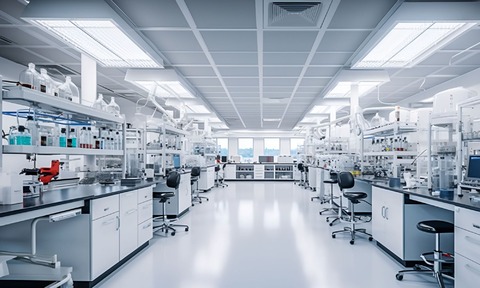Rising demand, shrinking footprint
4 Jul 2025

In a prelude to the Lab Innovations show, Mark Withers considers one of the most pressing issues for the laboratory sector – the critical shortage of spaces and how to deal with it.
The government is pushing for the UK to become a ‘science superpower’, but infrastructure is not keeping pace.
Several factors contribute to the shortage, but the most significant is the rapid growth of the scientific research sector, with scientific publications increasing at an exponential rate.
A surge in ‘mega-science’, that is large-scale, expensive research projects that rely on international collaboration, has only accelerated since the mid-20th century. Landmark initiatives like the Human Genome Project set a precedent for this kind of research, pushing demand for lab space in a direction that shows no sign of slowing.
As science advances, new specialisms continue to emerge, including clinical bioinformatics and clinical scientific computing. These fields add to the growing demand for research space.
“We’re seeing exciting treatments coming to the commercialisation stage that need to be manufactured” explained life sciences specialist Jennifer Townsend on the Intelligence Talks podcast series episode ‘Lab crunch: British science needs more space’.
She noted: “There’s a strong push in personalised treatment and gene therapy, which involves modifying our own cells and genes. These manufacturing facilities need to be located close to the patient and in a controlled clean room environment. It’s more conducive to carry this out domestically rather than relying on large global supply chains.”
As science advances, new specialisms continue to emerge. These fields add to the growing demand for research space
The shift of the sector for domestically placed manufacturing reduces the space available for research expansion. Retrofitting existing spaces is an option, but not always a realistic one. Costs can reach £500 to £4,000 per square metre. In a sector where budgets are already tight, the scientific community focuses heavily on efficiency, finding ways to make the most of the space they already have.
Scientific academia has long shared equipment, a collaborative mindset that helps maximise space and budget. Companies like UniGreenScheme collect, repair and resell lab equipment from across the UK. Instead of letting old instruments sit idle in storerooms, labs can offload unused items and free up much-needed space.
At King’s College London, its researchers are making full use of the scientific community’s collaborative spirit. When two of their X-ray machines went down, they reached out to the Natural History Museum, which offered access to its own facilities. This arrangement helped maintain research continuity while KCL worked to restore its own X-ray capacity.
Innovation from the inside out
The scientific industry is also responding to these spatial challenges. Compact equipment is the preferred choice for labs trying to do more with less. Hydrogenators that once took up four feet of fume hood space are now just one foot wide.
Footprint, not height, is often the constraint. Slim, tall designs use space more efficiently. IKA has begun to move in this direction with vertical vacuum pumps. Even something as simple as placing a PC on top of equipment rather than beside it makes a difference. When computers are built into the equipment, the saving is even greater.
For smaller or startup labs, modular systems offer flexibility to expand gradually, based on space, budget and research needs. Eppendorf’s modular PCR machine is one example: it’s designed to scale over time, allowing labs to start small and build up as demand grows, rather than committing to an oversized system from the beginning.
Plug-and-play systems are also growing in popularity. Mobile equipment makes it possible to convert underused areas into functioning lab space. These setups are especially useful in teaching labs, where the space often needs to adapt day by day.
Mobile equipment makes it possible to convert underused areas into functioning lab space. These setups are especially useful in teaching labs
Mobile equipment makes it possible to convert underused areas into functioning lab space. These setups are especially useful in teaching labs
As demand continues to rise and space remains tight, adaptability is no longer a bonus but a requirement. The scientific community is clear; if the UK is serious about becoming a science superpower, the spaces and systems supporting that ambition must be built with intelligence, efficiency and long-term flexibility in mind.
Mark Withers is senior purchasing technician at King’s College London
.................................................................................................
For more on this and related information, visit Lab Innovations, which runs at Birmingham NEC from 29-30 Octoberwith support from some of the UK’s top science institutions.
The show floor includes more than 160 leading scientific suppliers and manufacturers showcasing the latest laboratory developments and equipment. Exhibitors present the most cutting-edge technology applicable to a plethora of industries including life sciences, pharmaceuticals, academia, healthcare, chemical, food & drink, cleanroom and more.

